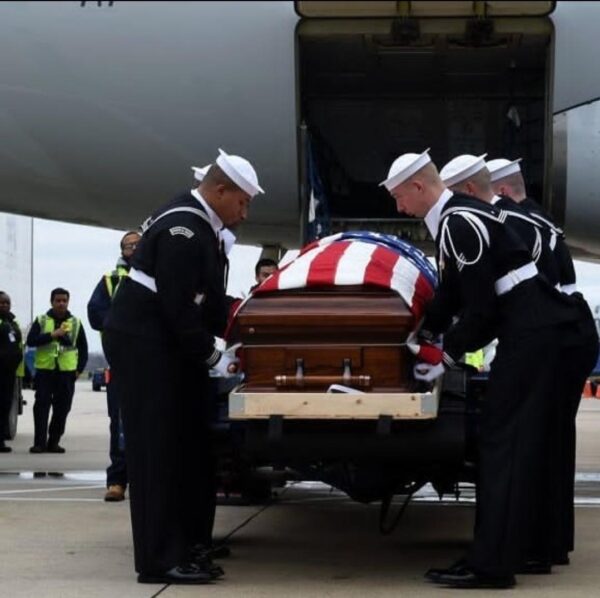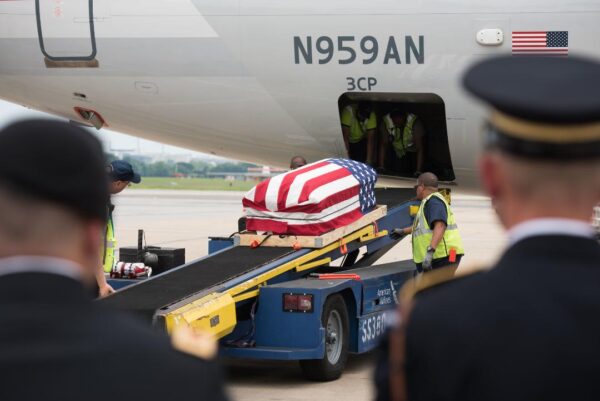Airlines receive caskets all the time, travelers just don’t usually know it unless the remains are of a member of the military. If military, the casket is draped with a flag and that gives it away.
I keep posting about this subject on social media to help the airlines understand that the practice of placing a flag on a casket shipping container must stop.
What is a Casket Shipping Container?
A shipping container, called an air tray in the industry, for a casket is pictured below. The combo tray is for remains not in a casket while the air tray is for casketed remains. For a complete explanation of both, please click here In Valhalla.


How is it Used?
A casket arrives at the airport shipping center via a hearse or van. The flag is removed, folded, and the escort (a death on Active Duty, see the movie Taking Chance) holds onto it throughout the flight(s). Workers then place the casket in the tray (the rigid wood bottom) and place the cardboard top over the casket and fit the top inside the lip of the tray. Bands are then wrapped over the lid and through the tray and secured.

The shipping container is transported to the aircraft, loaded last into the cargo area with the luggage, and unloaded first to change planes or taken to an awaiting hearse at the final destination. What is depicted in the photo at the top of the page is most likely a plane transfer.
Planeside Honors
When the plane arrives at the final destination, the ground crew or military members climb into the cargo area, remove the straps, remove the lid, drape the flag over the casket, place a casket band around the flag so that it does not blow off, and move the casket (still on the tray, the bottom piece) to the conveyor belt, the pallbearers take the casket and place it in the hearse. This is called Planeside Honors.
Improper
As you can see some military members have no idea that the air tray must be dismantled and the flag placed over the casket. These two images just happen to show Marines. That is not a reflection on the Marine Corps, the photos are just examples of what not to do. All services have made this mistake. Pallbearers need to insist the air tray is taken care of properly. You are in charge, not the ground crew.


Proper
The images below show the Ceremonial Guardsmen from the service honor guards in Washington DC. As for whether the flag (casket) should be draped or dressed, read here for an explanation.






If the casket is merely being transferred from on aircraft to another for a connecting flight, rendering honors for the deceased is most appropriate, but the flag is not to be placed, even temporarily, on the air tray.

Why We Do Not Drape a Shipping Container/Air Tray
- 4 USC Code § 7 – Position and manner of display (n). The flag only drapes a casket or military transfer case, (and a body bag, I’m softening on this since we used to do this extensively in WWII and it seems we still need to do this in certain cases).
- 4 U.S. Code § 8 – Respect for flag (e). The flag is not placed in an area where it may be easily damaged.
- The same two sections of the Flag Code (4 U.S. Code § 7 (b) & 8 (d)) also describe, among other restrictions, that the flag does not drape anything else.

